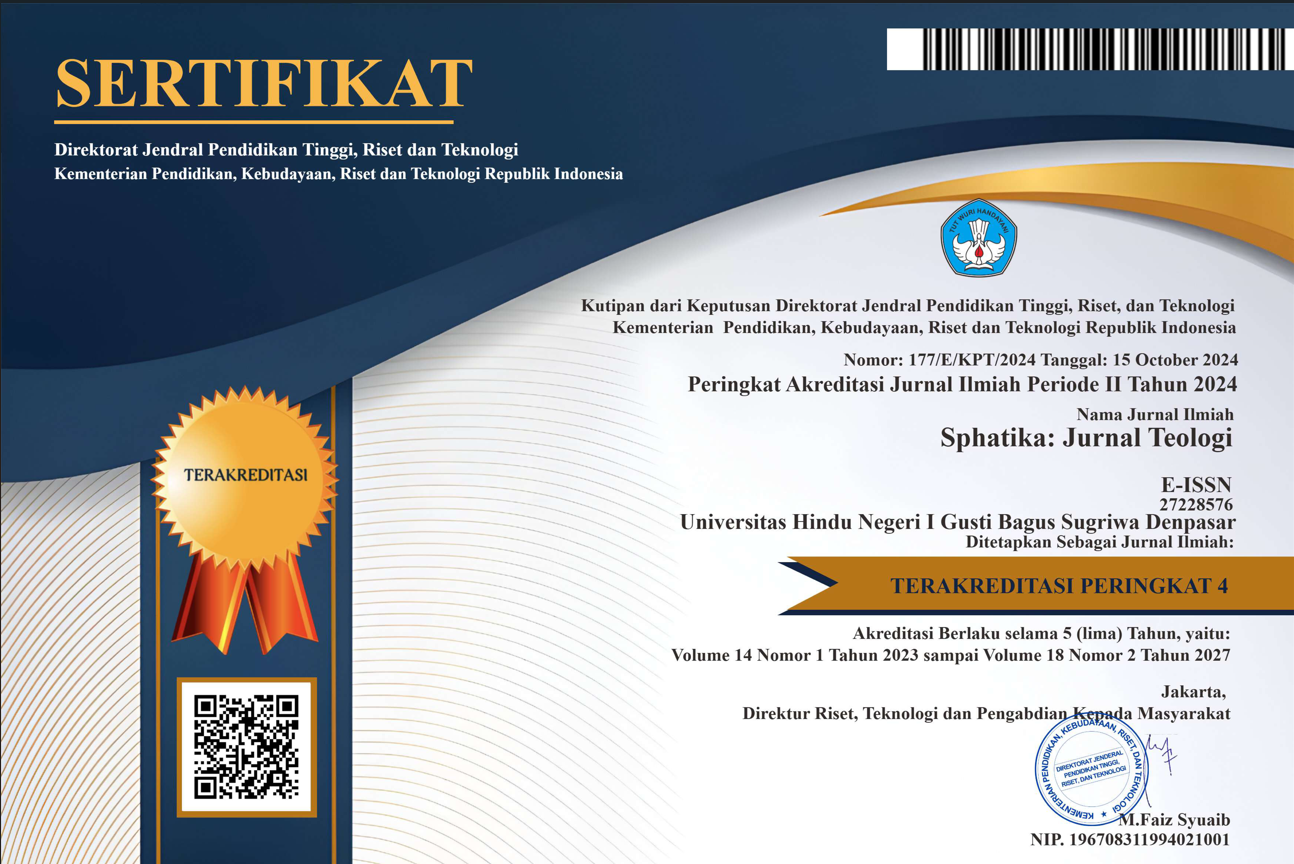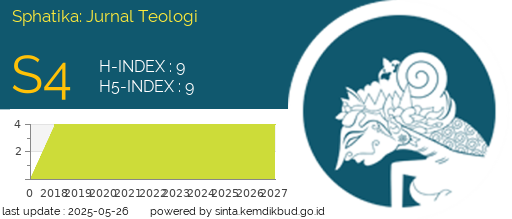Mengurai Kembali Peta Perkembangan Agama Hindu di Bali dan Nusantara
DOI:
https://doi.org/10.25078/sphatika.v13i2.1926Keywords:
Veda; lontar; Hindu Religion.Abstract
The development of Hinduism in the archipelago, especially in Bali, originated from the teachings of the Vedas which were then translated into various forms of lontar literature. The lontar work which is a development of the Vedas written in accordance with local culture makes it easier for them to understand religious teachings so that this library is then used as a reference for them to believe in Hinduism. With this understanding, it shows that the development of the Hindu religious teaching system in the archipelago and Bali in particular is a derivative of the Vedic understanding which is rewritten in various lontars containing ideas and ideas according to the culture of the people. This is then the basis for Hinduism that is flexible and naturalistic that can be accepted in the religious system in the archipelago.
References
Abdullah, Irwan. 2015. Konstruksi dan Reproduksi Kekuasaan. Yogyakarta: Pustaka Pelajar.
Adnan. Habib. 1999. Agama Masyarakat dan Reformasi Kehidupan. Denpasar: Balai Pustaka.
Agus, Bustanuddin. 2006. Agama dan Kehidupan Manusia. Jakarta: RajaGrafindo Persada.
Francais,A.S., 1998, “Politics of The Center in Bali’s Cultural Periphery: Transformations of Power in An Old-Balinese Village Mandala”, A dissertation submitted to the Graduate Faculty in Antropology in partial fulfillment of the requirements for the degree of Doctor of Philosophy, The City University of New York, UMI Disertation Services, A Bell & Howell Company.
Goris,R., 1986, “Sekte-sekte di Bali”, Cetakan Kedua, PT. Bhatara Karya Aksara, Jakarta.
Korn,V.E., 1960, “The Village Republic of Tenganan Pagringsingan”, Bali, Studies in Life Thought and Ritual, W.van Hoeve Ltd. The Hague and Bandung.
Pandit,N.D., dan Tamba,I G.M., 1955, “Sedjarah Agama Hindu”, Bhuvana Saraswati Publications, Denpasar Bali.
Pitana, I Gede. 1994. Adi Wacana : Mosaik Masyarakat dan Kebudayaan Bali. Denpasar: Balai Pustaka.
Pudja, Gde dan Tjokorda Rai Sudharta. 2004. Manawa Dharmasastra. Surabaya: Paramita.
Putra, I G.A.G., dkk, 1987, “Sejarah Perkembangan Agama Hindu di Bali”, Proyek Penyuluhan Agama dan Penerbitan Buku Agama, Pemerintah Daerah Tingkat I Bali, Denpasar.
Sudardana, Komang, 2010.Tat Twam Asi Ajaran Kesamaan Martabat Manusia, Paramita, Surabaya.
Tantra, Dewa Komang. 2014. Membaca Perubahan Bali. Bali: Wisnu Press.
Titib, I Made. 1996. Veda Sabda Suci: Pedoman Praktis Kehidupan. Surabaya: Paramita.
Wiana, I Ketut. 2002. Memelihara Tradisi Veda. Denpasar: Balai Pustaka.
Wiana, I Ketut. 2004. Bagaimana Umat Hindu Menghayati Tuhan. Denpasar: Pustaka Manikgeni.
















